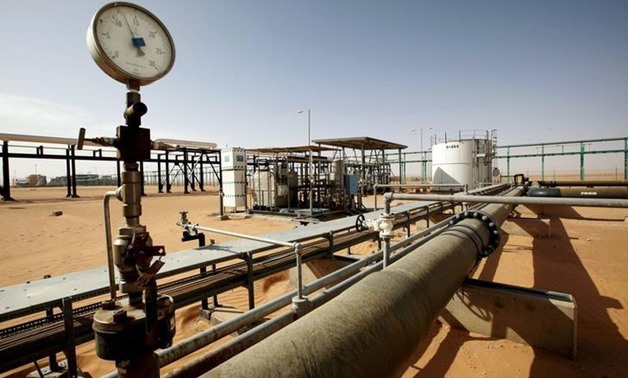
FILE PHOTO: A general view of the El Sharara oilfield, Libya December 3, 2014. REUTERS/Ismail Zitouny/File Photo
TOKYO - 18 July 2018: Oil prices fell on Wednesday on news of a rise in U.S. crude inventories last week, defying analyst expectations for a big fall, while concerns about weak demand growth also resurfaced.
Brent futures were down 43 cents, or 0.6 percent, at $71.73 a barrel by 0335 GMT, wiping out a 32 cent gain on Tuesday when the benchmark hit a three-month low.
U.S. West Texas Intermediate crude was down 50 cents, or 0.7 percent, at $67.58, not far off Tuesday’s one-month low at $67.03 a barrel.
Crude had steadied after big declines on Monday and last week as supply disruptions in Venezuela came to the fore, while analysts forecast a decline of 3.6 million barrels in U.S. inventories for the week through July 13.
However, the specter of oversupply quickly returned when the American Petroleum Institute reported a rise of more than 600,000 barrels late on Tuesday. [API/S]
Official numbers from the U.S. Department of Energy’s Energy Information Administration are due at 10:30 a.m. EDT on Wednesday.
On the demand-side, intensifying risks over trade tensions between the United States and China could drag on the global economic outlook, BMI Research said.
“Despite U.S.-China trade tensions, the economic outlook is broadly positive, but a number of headwinds are emerging, not least a stronger dollar, rising inflationary pressures and tightening liquidity,” BMI said.
“Slowing trade growth will weigh on physical demand for oil, with the shipping, road and air freight sectors an important pillar of demand globally,” BMI said.
One U.S. central banker added her voice late on Tuesday to those sounding caution on trade.
Kansas City Federal Reserve Bank President Esther George said that uncertainty over U.S. trade policy could slow the economy, even if the recently imposed tariffs in and of themselves are too small to have a big impact.
George called trade policy a “significant” downside risk to her outlook for economic growth, even as tax cuts and other fiscal policy is an upside risk.


Comments
Leave a Comment